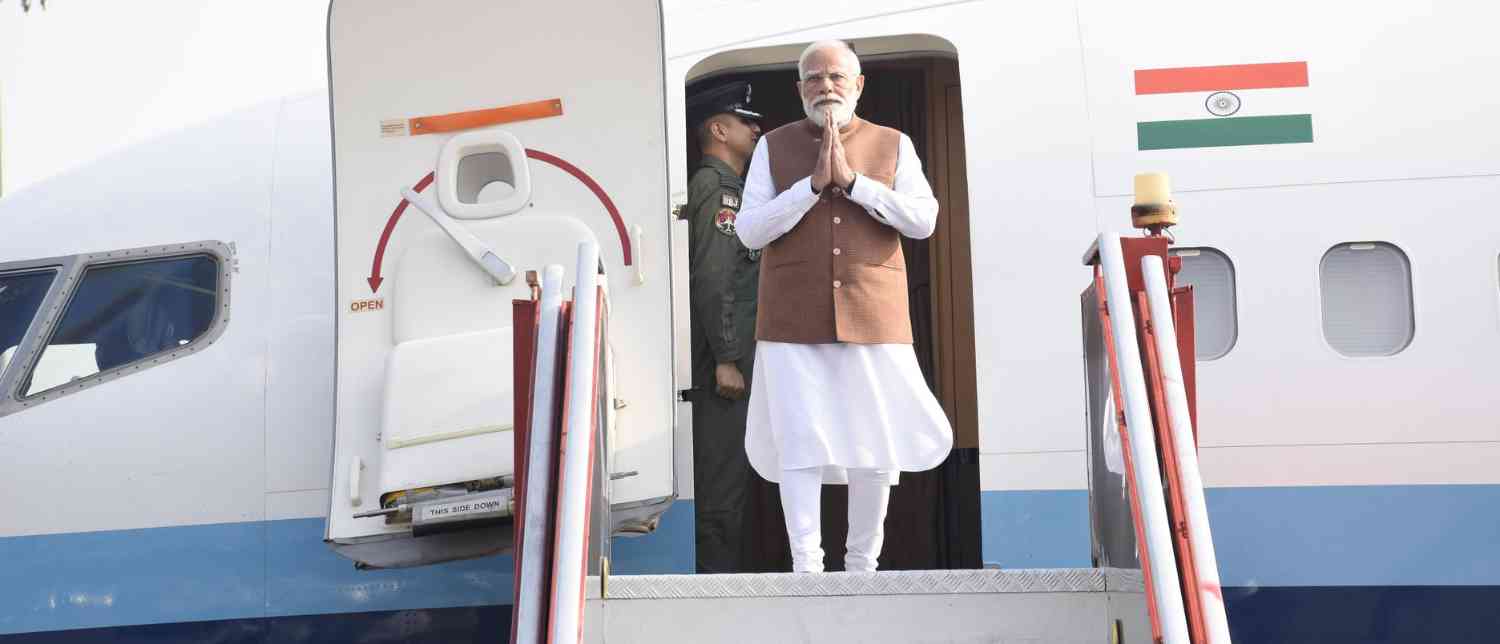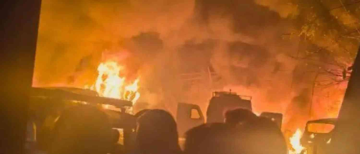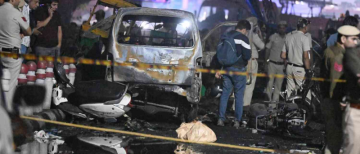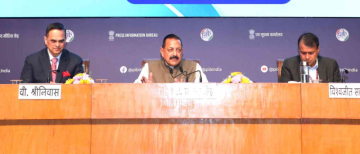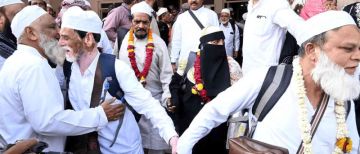Prime Minister Narendra Modi visited the under-construction Bullet Train Station in Surat, Gujarat, over the weekend to review the ongoing work on the Mumbai–Ahmedabad High-Speed Rail Corridor (MAHSR)—India’s first-ever bullet train project and one of the country's most ambitious infrastructure ventures to date. The visit marked a crucial moment in the nation’s journey toward high-speed rail connectivity, symbolising technological progress, engineering excellence, and a vision for next-generation transport.
Landing at Surat airport early in the morning, PM Modi travelled to the Antroli area, where the Surat bullet train station is rapidly taking shape. During the inspection, he interacted with project engineers, workers, and team leaders who are driving this historic development forward. According to the Prime Minister’s Office, the interaction was an opportunity for Modi to directly assess field-level progress and understand the pace of execution, including adherence to planned speed, timeliness, and technical benchmarks.

A Deep Dive Into India’s First Bullet Train Project
The Mumbai–Ahmedabad High-Speed Rail Corridor spans approximately 508 kilometres, linking major economic and cultural hubs across three regions—352 km in Gujarat and Dadra & Nagar Haveli, and 156 km in Maharashtra. Once completed, the corridor will connect key cities including Sabarmati, Ahmedabad, Anand, Vadodara, Bharuch, Surat, Bilimora, Vapi, Boisar, Virar, Thane, and Mumbai. The project aims to reshape the future of Indian transportation by drastically reducing travel time and enhancing intercity connectivity.
Built using state-of-the-art engineering methods aligned with global standards, nearly 85% of the route (465 km) will be elevated on viaducts. This design approach minimises land disruption, ensures enhanced safety, and allows the bullet train to operate at consistently high speeds. As per official updates shared during the PM’s visit, 326 km of viaduct construction has already been completed, along with 17 of the planned 25 river bridges.
Once operational, the bullet train is expected to cover the Mumbai–Ahmedabad distance in just about two hours—a massive transformation compared to current travel times. The project is poised to rejuvenate business travel, boost tourism, and stimulate regional economic growth along the entire corridor.
PM Modi Interacts With Engineers and Workers: ‘A Historic National Contribution’
During his visit, PM Modi engaged deeply with the engineering teams, technicians, and project managers. He enquired about challenges, the use of technology, and overall progress of the construction.
A young engineer from Kerala shared her experience of working at the Noise Barrier Factory in Navsari, where advanced robotic units are being utilised for welding rebar cages. When the Prime Minister asked how she felt contributing to India’s first bullet train, she described the opportunity as nothing short of a “dream project” and a “proud moment” for her family—an example of the emotional connection many workers feel toward this milestone in India’s infrastructure history.
Reflecting on her story, PM Modi emphasised the power of national service and innovation. He compared the pride surrounding the bullet train project to India’s early space missions—when scientists successfully launched the country’s first satellite. "When the feeling arises of working for the nation and contributing something new, it becomes a source of immense motivation," he said.
Another project leader, Shruti from Bengaluru, currently serving as Lead Engineering Manager, discussed the project’s rigorous technical processes. She explained how her team consistently evaluates pros and cons, analyses alternatives, and implements solutions to maintain precision at every stage of execution.

A Push for Documenting Learnings: PM Modi Suggests a ‘Blue Book’
One of the most compelling moments of PM Modi’s interaction was his suggestion that the entire journey—experiences, processes, learnings, and challenges—should be systematically documented. He proposed compiling a comprehensive “Blue Book” that could serve as a reference for future bullet train projects in India. This, he stressed, would help prevent repetitive experimentation and ensure that future expansions of high-speed rail follow streamlined, well-tested frameworks.
He highlighted that replication of successful models must come with a clear understanding of the why behind each decision. “Otherwise,” he cautioned, “replication may occur without purpose or direction.” Such documentation, he noted, would hold immense value not just for future engineers but also for students and researchers contributing to the nation’s long-term development. “We will dedicate our lives here and leave behind something valuable for the country,” he affirmed.
During the visit, an employee also recited a heartfelt poem expressing dedication to the project. PM Modi appreciated the emotion and commitment behind the gesture.
Union Minister Ashwini Vaishnaw accompanied the Prime Minister during the visit, highlighting the high-level attention and importance the Central Government is assigning to this transformative project.
Surat–Bilimora Section in Advanced Completion Stage
One of the standout updates shared during the review was regarding the Surat–Bilimora section, which spans around 47 kilometres. This stretch is now in an advanced stage of construction, with civil works and track-bed laying already fully completed.
The Surat station itself has been crafted with careful attention to design aesthetics and functionality. Taking inspiration from Surat’s globally renowned diamond industry, the station’s architecture reflects both elegance and efficiency—symbolising the city's identity.
Passenger comfort is a key priority. The station will offer:
-
Spacious waiting lounges
-
Modern, hygienic restrooms
-
Multiple retail outlets
-
Clear passenger flow and navigation
-
World-class amenities
Additionally, the station will have seamless multi-modal connectivity with the Surat Metro, city buses, and the wider Indian Railways network—ensuring smooth last-mile travel for passengers.

A Day of Engagements in Gujarat: PM Modi’s Broader Itinerary
Beyond reviewing the bullet train station, PM Modi continued his engagements in Gujarat later in the day. He travelled to Dediapada in the tribal-dominated Narmada district to participate in events commemorating the birth anniversary of freedom fighter and tribal icon Birsa Munda.
During this visit, the Prime Minister also inaugurated and laid the foundation stones for infrastructure and development projects worth over ₹9,700 crore. These initiatives span sectors including connectivity, public amenities, rural development, and welfare infrastructure.
Before addressing the public gathering, PM Modi visited the temple of Pandori Mata, the revered clan deity of the local tribal communities, in Devmogra village. This spiritual visit underscored his engagement with local culture, traditions, and sentiments.
A Transformational Leap for India’s Infrastructure Journey
The Mumbai–Ahmedabad Bullet Train Corridor represents much more than a transport project—it is a symbol of India’s aspirations for cutting-edge development, global competitiveness, and forward-looking infrastructure planning.
From the extensive viaduct construction to the adoption of advanced engineering practices, from worker testimonies to PM Modi’s emphasis on documenting learnings, every detail of this project highlights India's commitment to quality, innovation, and efficiency.
Once operational, the bullet train will:
-
Cut down travel time to nearly two hours
-
Improve trade and tourism between major cities
-
Enhance job creation and economic activity along the corridor
-
Introduce India to world-class high-speed rail travel
As PM Modi reviewed the work and interacted with those bringing the vision to life, the visit reaffirmed the project’s pace and significance.
With inputs from agencies
Image Source: Multiple agencies
© Copyright 2025. All Rights Reserved. Powered by Vygr Media.

